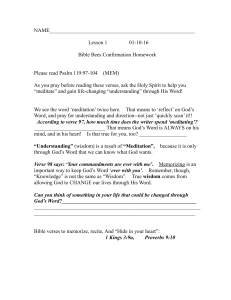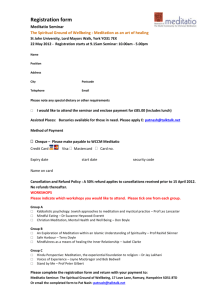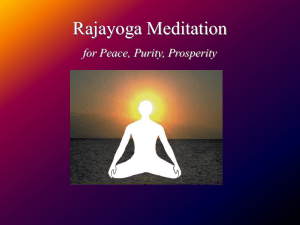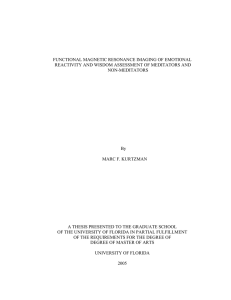"Om" - Meditation Works!
advertisement
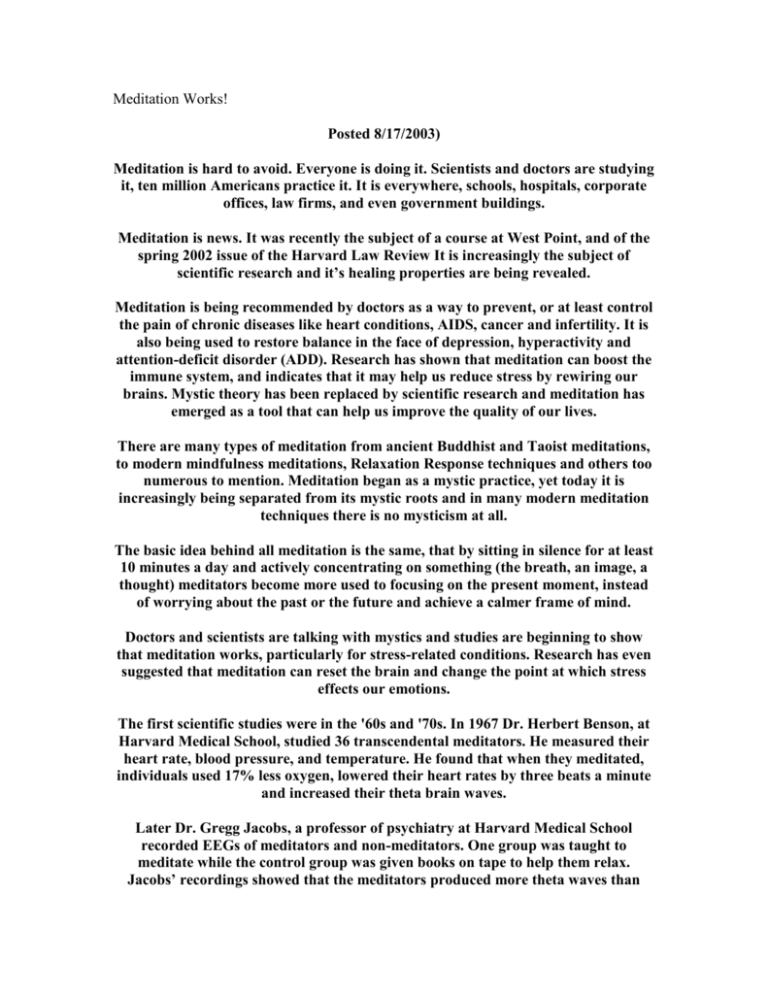
Meditation Works! Posted 8/17/2003) Meditation is hard to avoid. Everyone is doing it. Scientists and doctors are studying it, ten million Americans practice it. It is everywhere, schools, hospitals, corporate offices, law firms, and even government buildings. Meditation is news. It was recently the subject of a course at West Point, and of the spring 2002 issue of the Harvard Law Review It is increasingly the subject of scientific research and it’s healing properties are being revealed. Meditation is being recommended by doctors as a way to prevent, or at least control the pain of chronic diseases like heart conditions, AIDS, cancer and infertility. It is also being used to restore balance in the face of depression, hyperactivity and attention-deficit disorder (ADD). Research has shown that meditation can boost the immune system, and indicates that it may help us reduce stress by rewiring our brains. Mystic theory has been replaced by scientific research and meditation has emerged as a tool that can help us improve the quality of our lives. There are many types of meditation from ancient Buddhist and Taoist meditations, to modern mindfulness meditations, Relaxation Response techniques and others too numerous to mention. Meditation began as a mystic practice, yet today it is increasingly being separated from its mystic roots and in many modern meditation techniques there is no mysticism at all. The basic idea behind all meditation is the same, that by sitting in silence for at least 10 minutes a day and actively concentrating on something (the breath, an image, a thought) meditators become more used to focusing on the present moment, instead of worrying about the past or the future and achieve a calmer frame of mind. Doctors and scientists are talking with mystics and studies are beginning to show that meditation works, particularly for stress-related conditions. Research has even suggested that meditation can reset the brain and change the point at which stress effects our emotions. The first scientific studies were in the '60s and '70s. In 1967 Dr. Herbert Benson, at Harvard Medical School, studied 36 transcendental meditators. He measured their heart rate, blood pressure, and temperature. He found that when they meditated, individuals used 17% less oxygen, lowered their heart rates by three beats a minute and increased their theta brain waves. Later Dr. Gregg Jacobs, a professor of psychiatry at Harvard Medical School recorded EEGs of meditators and non-meditators. One group was taught to meditate while the control group was given books on tape to help them relax. Jacobs’ recordings showed that the meditators produced more theta waves than those who listened to the tapes. Meditators had mostly deactivated the areas of the brain that process sensory information. They also lowered activity in the parietal lobe, the part of the brain that orients you in space and time. This is interesting in light of meditations mystic roots because by quieting the parietal lobe you can loose sense of your boundries and feel more connected to the universe around you. When brain imaging became available studies became more sophisticated. Richard Davidson (University of Wisconsin) used brain imaging to determine that meditators shifted brain activity from the left side of the brain to the right side, a shift accompanied by increased enthusiasm and relaxation. It is being studied in prisons and in hospitals where it is surprisingly successful at helping people to be calmer and less depressed. John Teasdale (Cambridge University) found that mindfulness meditation helped chronically depressed patients, and reduced their relapse rate by half. Founder of the Stress Reduction Clinic at the UMass Medical Center, Jon KabatZinn has helped more than 14,000 people (many with cancer, AIDS, and chronic pain), to manage their pain without medication. More recently Kabat-Zinn has been studying people with psoriasis (a difficult to treat skin disease). Psoriasis often treated by having patients stand naked (except for goggles) in a hot, loud ultraviolet lightbox. A treatment that patients often find stressful. Kabat-Zinn randomly picked half the patients and taught them to meditate as a means of reducing their stress during treatment. He did two experiments and in both the meditators' skin cleared up four times faster than that of the control group who did not meditate. But what about the flu, and what if you have just learned to meditate? Another set of experiments gave newly trained meditators and non-meditators flu shots. Researchers measured antibody levels in their blood, they also measured their brain activity to determine if their mental activity shifted from the right to the left brain. Both groups were tested at four and eight weeks. The results were very interesting Not only did the meditators have more antibodies than the control group, but those meditators whose brain activity had shifted to the left most had the most antibodies. The better your meditation technique, Kabat-Zinn suggests, the healthier your immune system. Evidence continues to grow that meditation works for health. It has been shown that women who meditate have more of the immune cells that combat tumors in the breast. And many studies have shown that meditation can reduce blood pressure. Today all types of people meditate. People in the mainstream of American culture and upwardly mobile professionals meditate, as do Goldie Hawn, Shania Twain, Heather Graham, Richard Gere and Al Gore to name a few. Even athletes meditate Basketball coach Phil Jackson used meditation to help the Chicago Bulls. And politicians are getting into the act. After 9/11 the Federal Trade Commission in Washington invited speaker to give a presentation on meditation. Approximately half the staff is still at it. Meditation is being practiced by people in all walks of life, in fact meditation is increasingly hard to avoid. It is offered in schools, hospitals, law firms, government buildings, and corporate offices and health clubs. Try it, you might just like it. From the original article "Just Say Om!" by Joel Stein, Time Magazine (8/4/03) http://www.time.com/time/covers/1101030804/story.html http://www.time.com/time/covers/1101030804/story2.html http://www.time.com/time/covers/1101030804/story3.html

